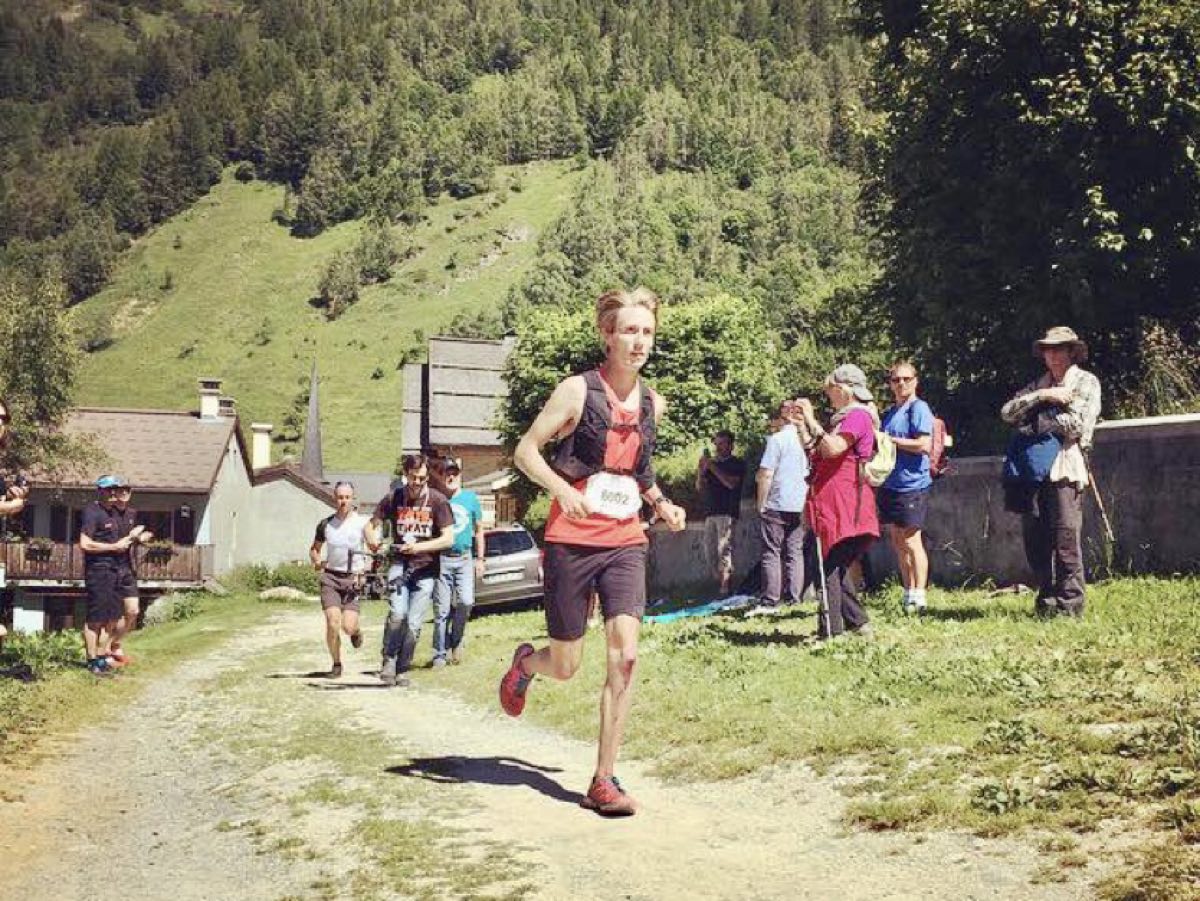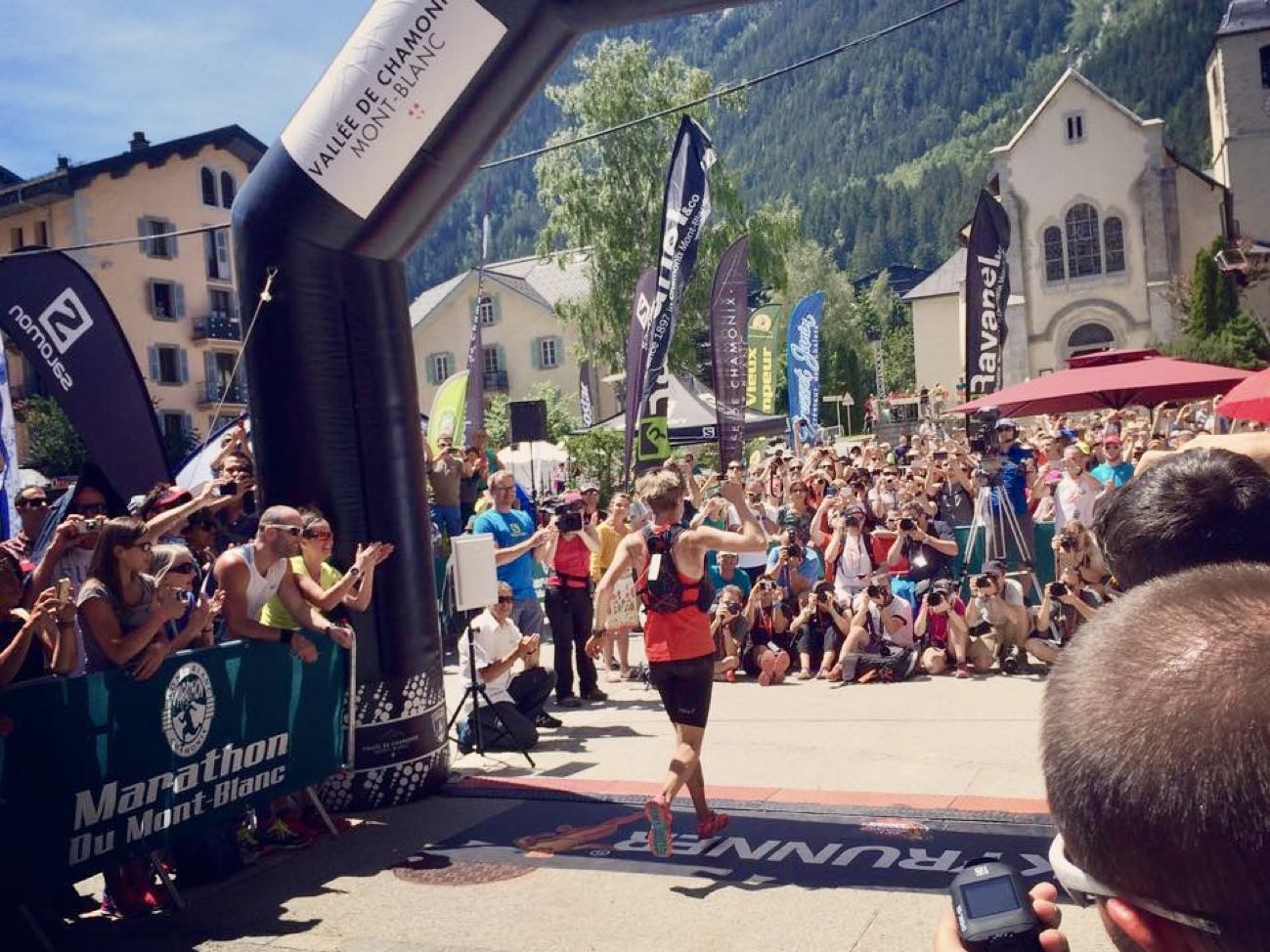In the weeks leading up to the 2015 Mont Blanc 80k, which starts and finishes in Chamonix, France, I was nervous. At that point in my trail running career I had run some races in the 50-mile (80 kilometer) range, but I had never run any course that featured the 23,000 feet (7,000 meters) of elevation gain that this race did. The year before, the course record was set by Luis Alberto Hernando at 10 hours and 25 minutes as part of the Skyrunning World Championships. Even on my best day, I would be racing at least 10 hours. That would be about three hours longer than I had ever raced at that point.
To manage my nerves about this unknown race territory, I decided to break the race down into less daunting segments. I set my watch to auto-split every 10 miles. Instead of feeling like I was running into the unknown, I told myself that I just needed to get through five separate 10-mile segments. If I could run each segment at about the same pace, then I knew I would do well.
At 4:00 a.m., we started the race in a quiet darkness. A nearly full moon illuminated the snowy peak of Mont Blanc on the other side of the valley as we snaked our way to the top of the first climb. The sun rose and I reminded myself of the coming hours and held back my effort. The hours ticked by and my watch reset. I found myself running in the lead with Andy Symonds and Franco Collé. By the third reset, I was still feeling good, and felt confident that I could finish the race strong. I had a more reasonable 20 miles to go, just two 10-mile segments left. I made a push on the second-to-last major climb and put a gap on Franco. A surge of adrenaline went through me as I began to believe a win was possible.
I was out front, charging up a climb in the serene Chamonix Valley, when a race helicopter swooped out from behind me. I assumed they were filming the race, so I kept running. Eventually I caught the eyes of a passenger waving furiously and pointing behind me. A realization hit me like a brick: I had run off course at the last intersection. I had added a climb and about half a mile of extra distance. I was upset, frantic, and convinced that I had just lost the race. After a few steps of sprinting back toward the course, I checked my watch and realized I still had about four hours of running if I was on course-record pace. I might have lost the lead and some time, but I could make it up if I ran within myself.
I could see Franco ahead of me on the trail I had left. He had gained a few minutes on me, but he wasn’t out of reach. On the penultimate downhill, I pressed the pace and managed to get past him once again. My watch beeped one last time heading into the last aid station. I had 10 miles with one major climb and descent left. I ran in fear, but by the time I made it back to the streets of Chamonix and the finish line, I was alone.
This race was a practice in patience. It was my longest race by time, and it was made even longer due to the wrong turn, but it was still a success because of sustained patience. Whether you are running a 10k for the first time, or a 100k, maintaining patience early in the race, or when things go wrong, can be extremely difficult.
It is hard to judge our effort early on in a race when it is a longer distance or time than we have ever run before. As I did with my lap splits, breaking a new distance down into smaller chunks can help to approach it in a more patient way. It can also help maintain motivation by providing smaller goals and rewards within the larger picture of the race.
Races don’t always need to be broken down into distance. You can do the same thing with time-based segments, or distance between aid stations, or landmarks based on the course profile. Breaking the race into chunks can help to both see the big picture, and to maintain focus in the present.
In every race I have run, from 5k to 50 miles, there have always been ups and downs. A race is never going to go perfectly. That inconsistency is something that we can prepare for so that it doesn’t sabotage the entire day. When things do go wrong, try to think of the big picture. Even if you miss an aid station or run off course, there is always time to fix the issue if we slow down and consider the situation in the larger context of the race. Take a breath and don’t panic. If you are in a “down” segment of the race, stay patient, have faith that it will get better, and wait for the next “up” to happen.
Patience is a valuable skill that can take time to develop. Starting with a couple of simple tools like compartmentalizing a new challenge and being prepared ahead of time for setbacks that are out of your control can help utilize patience to perform better. In racing and even in training, patience can help us take on new challenges and accomplish things that once seemed impossible.
Call for Comments
- Do you have an example from a race or long adventure where you broke it up into more digestible pieces which helped you to stay patient?
- And what about an example of adversity in a race, like Alex Nichols shared, where you have managed to stay patient through it?


